Carthage was founded by a Phoenician princess, Alyssa, who in ancient texts is known as Dido. Destroyed by the Romans, Carthage would be reborn from its ashes and became a major city of the Roman empire.
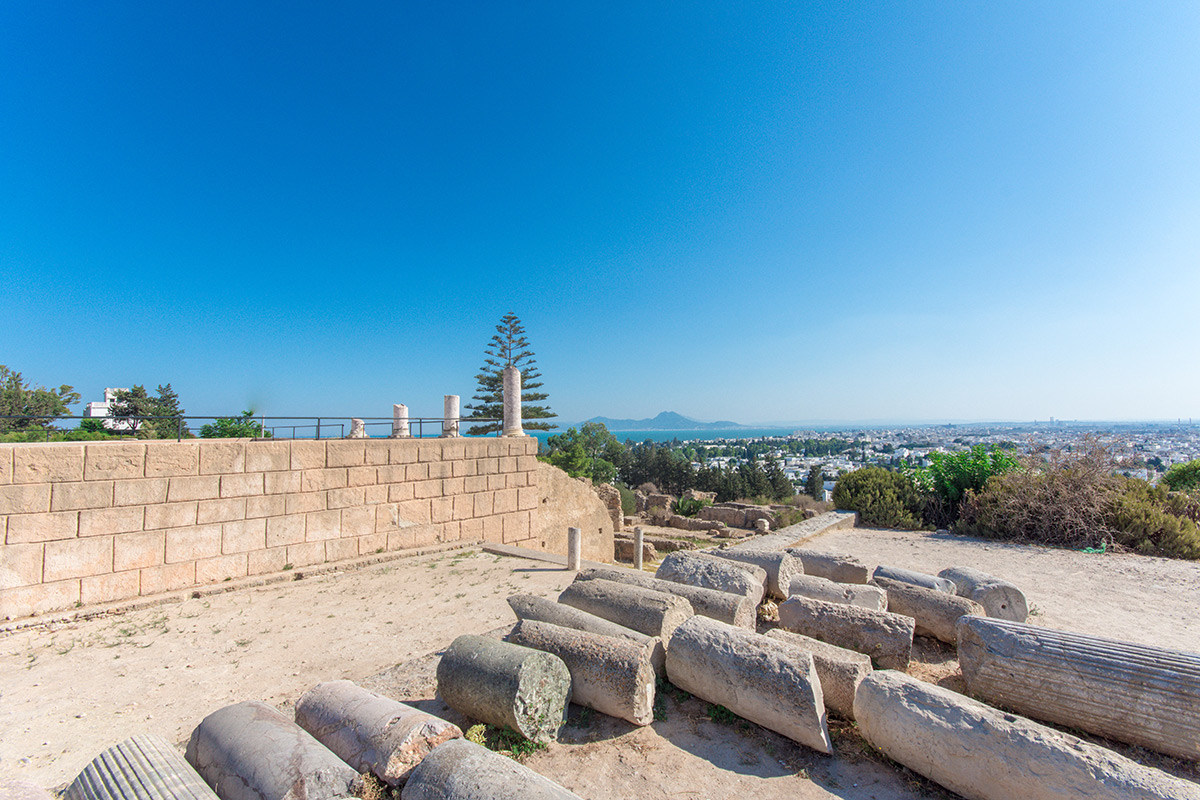
Carthage – Qart Haddasht or “new city” in the Phoenician language – was founded by a woman, Alyssa, who in ancient texts is known as Dido (“The Wanderer”). Sister of Pygmalion, the king of Tyre, she left Phoenicia with a handful of companions: her own brother had murdered her husband, a priest of the goddess Ashtart. It was, according to the texts, 814 B.C.
Then, the decline of the Phoenician cities of the East caused Carthage to take up the key role in their network. She made it into one of the richest empires of its time. Only the Greeks could overshadow it; but it was the Romans, in the end, who overcame its might, invaded it and delivered it to the flames in 146 B.C.
A century later, Carthage would be reborn from its ashes. Rebuilt in Rome’s image, it would be close to its equal in splendour due to the size and opulence of its monuments. The province of Carthage, Africa, would become one of the Empire’s most dazzling; it was also, in late antiquity, a key location for the spread of Christianity.
This rich history has left countless traces scattered across a vast area. The different eras are intimately intertwined.
These basins, although partly filled, still remain; the second contains a central island where traces of the former dry docks were found.
Close by could be found the Punic sanctuary dedicated to the deities Tanit and Baal Hammon, today better known as tophet. It consisted of a vast open-air sacred space where the Carthaginians placed, for centuries, carved stelae bearing their wishes, these would be accompanied by offerings and animal sacrifices.
The dimensions of the amphitheatre approached those of the Colosseum of Rome. The hippodrome, today long gone, was the second largest of the whole empire after the Circus Maximus.
The new Carthaginians went to the theatre en masse; there they cheered for comedies and Latin tragedies, mime shows, tightrope walkers, public lectures given by speakers such as the great African writer Apuleius.
Well preserved, this theatre used to be even bigger than it appears today: upper tiers were added to the stands built into the hillside, supported underneath by a structure of arcades.
The rich Romans had superb villas with courtyards lined with alternating porticos, mosaic-tiled ceremonial rooms, gardens punctuated with marble statues and fountains.
They went to unwind under the vaulted ceilings of the thermal baths built under Emperor Antoninus: their lower levels, well preserved, and a few immense columns give an idea of their colossal dimensions– up to thirty metres under the highest point of the highest vault. Close by, Punic tombs, remains of Roman houses, ruins of crypts and Christian basilicas intermingle.
For Carthage was also a great hub of Christianity. Saint Augustine imposed his doctrine there through heated councils. Several ruins of Christian basilicas have been rediscovered; the one known as Damous el-Karita is the largest in Africa.
Carthage was then abandoned for centuries, and its monuments looted: its marble and its granite were used to build the cathedrals in Pisa and Genoa, its most beautiful capitals and marble columns were taken to decorate the Al-Zaytuna mosque in Tunis. The site still remains strongly evocative of this city whose influence was felt for over a thousand years.
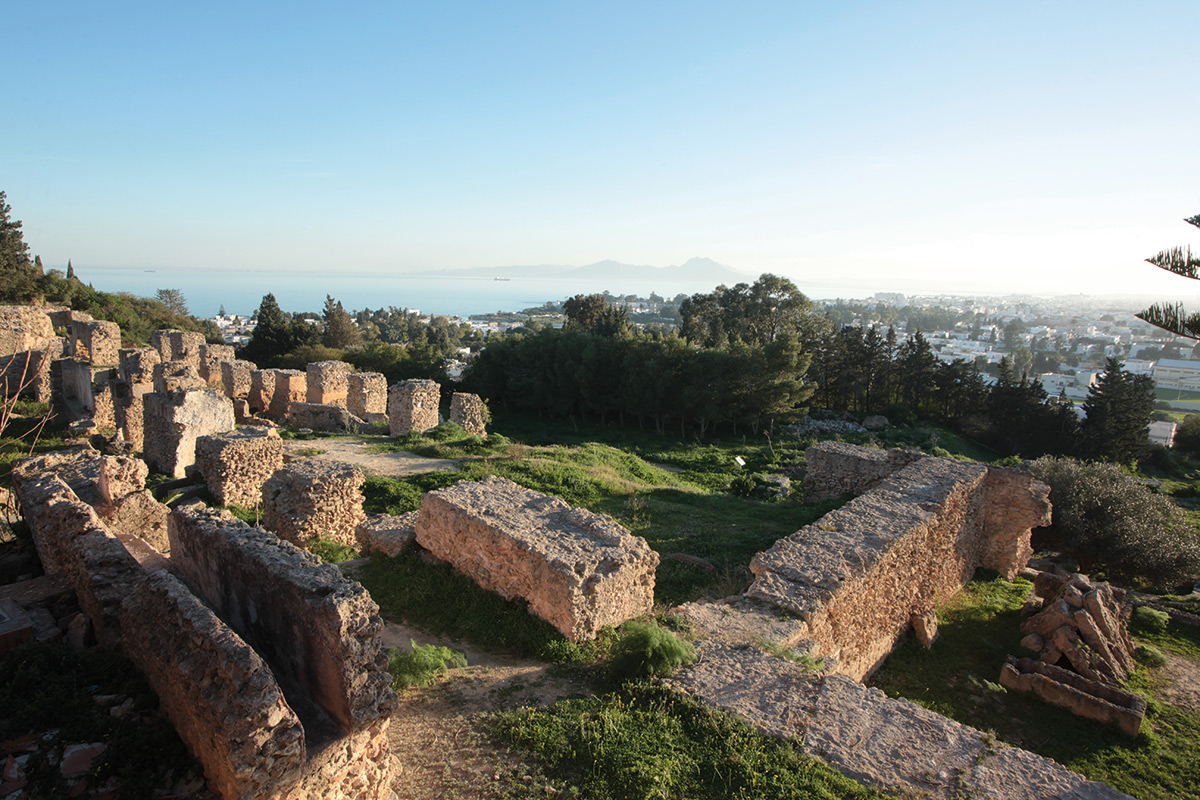
According to legend, Byrsa Hill would be the founding place of the city. The site addressed the usual worries of the Phoenicians with the possibility of establishing a well protected and easily defensible port. Visible on the other side of the bay, Mount Bougarnine (“with two horns”) sheltered a sanctuary dedicated to the god Baal, renamed Saturnus Balcaranensis in the Roman era.
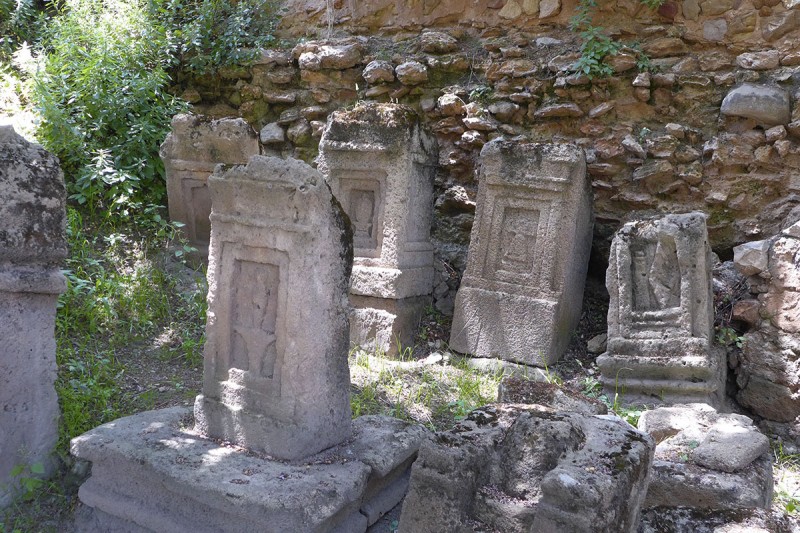
The sanctuary dedicated to the goddess Tanit and the god Baal Hammon is a space where, layer upon layer, thousands of votive stelae have accumulated. Its nickname of tophet (of biblical origin) refers to the tales of child sacrifices that certain Greek and Roman authors returned with; but the reality of this archaic rite is disputed by leading experts.
Carthaginian art, of Phoenician origin, often transmits an Egyptian or Greek influence. Carthage also extensively imported and copied the most beautiful manufactured products from around the Mediterranean basin. Excelling in pottery, metallurgy, the working of ivory and glass paste, the Carthaginians were generally open to influences from the world at large.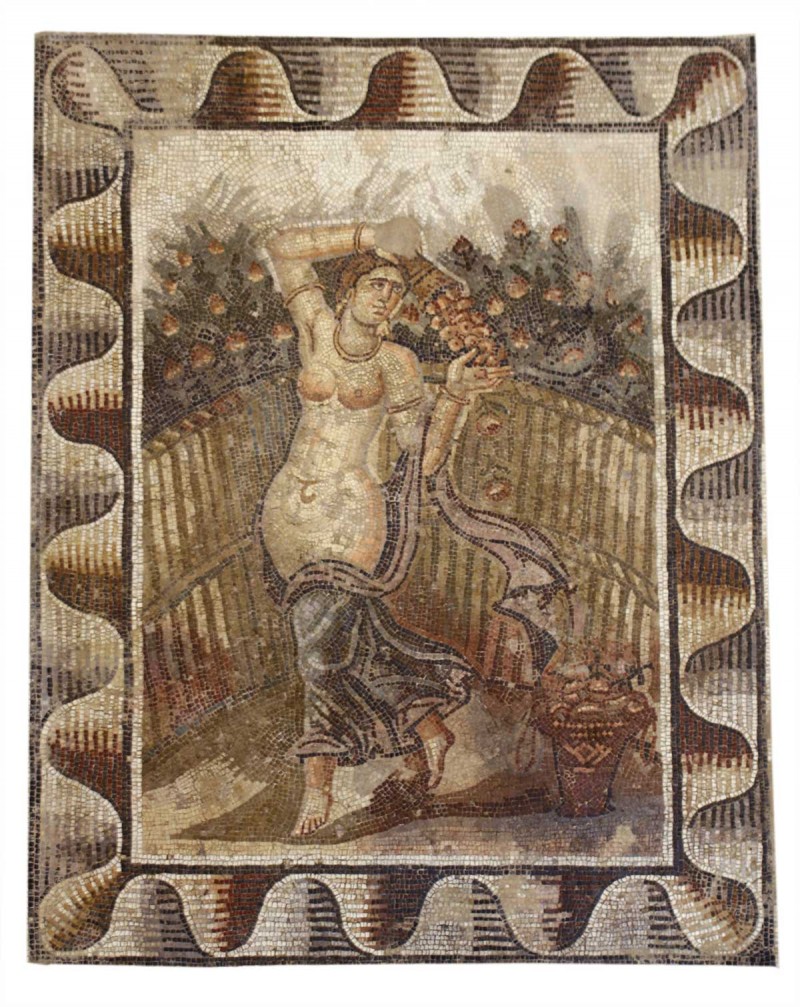
It is in Tunisia that Roman mosaic attained a high level of artistry, thanks to the creativity and technical mastery of the local mosaic artists. Roman African mosaic is remarkable for the spontaneity of its scenes and the realism of its delicately nuanced colours.
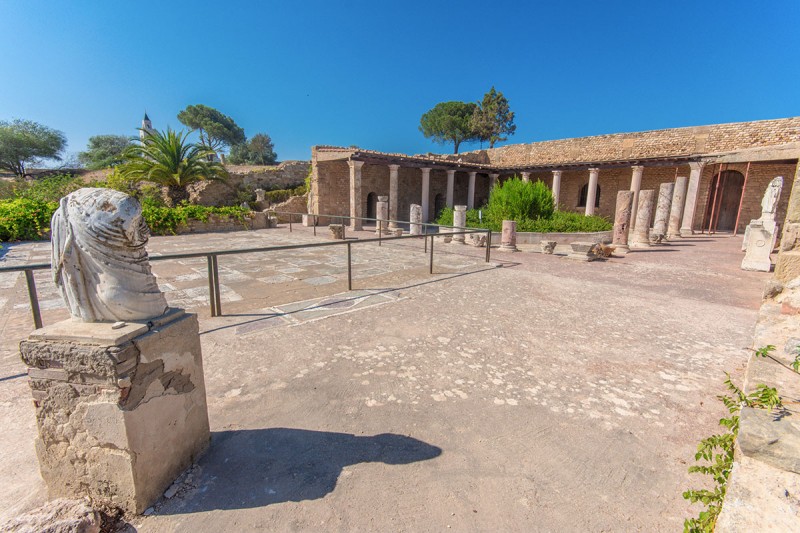
The restored Roman Villa known as La Voliere is remarkable with its pink marble colonnade and its appearance hall which overlooks a series of basins. The beautiful Romano-African homes were arranged around an interior courtyard, and their floors decorated with mosaics (the one featuring racehorses comes from another Carthaginian dwelling).
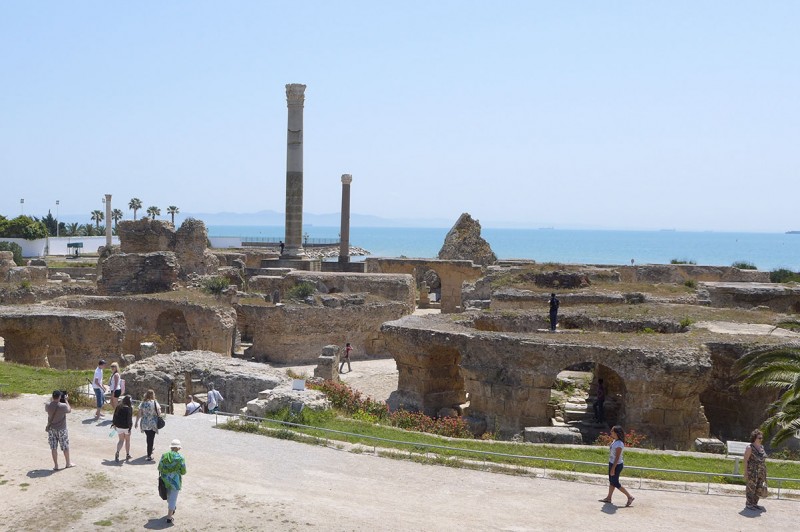
The Baths of Antoninus are some of the most remarkable of the Roman world due to their opulence and their size (close to 300 metres in length). A few columns from the upper level have been preserved; one of them, 15 metres high, supported an arch with a peak height of 30 metres. The lower level consisted of spaces for relaxation and service.
© G. Mansour, “Tunisie, patrimoine universel”, Dad Editions, 2016
Video: the Baths of Antoninus
Video: the Cisterns of La Maalga
The site of Carthage was declared a UNESCO World Heritage Site.